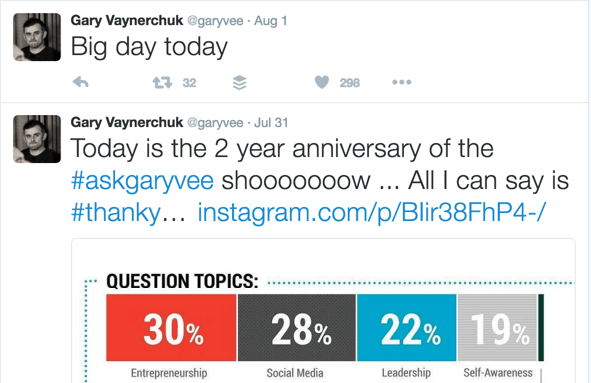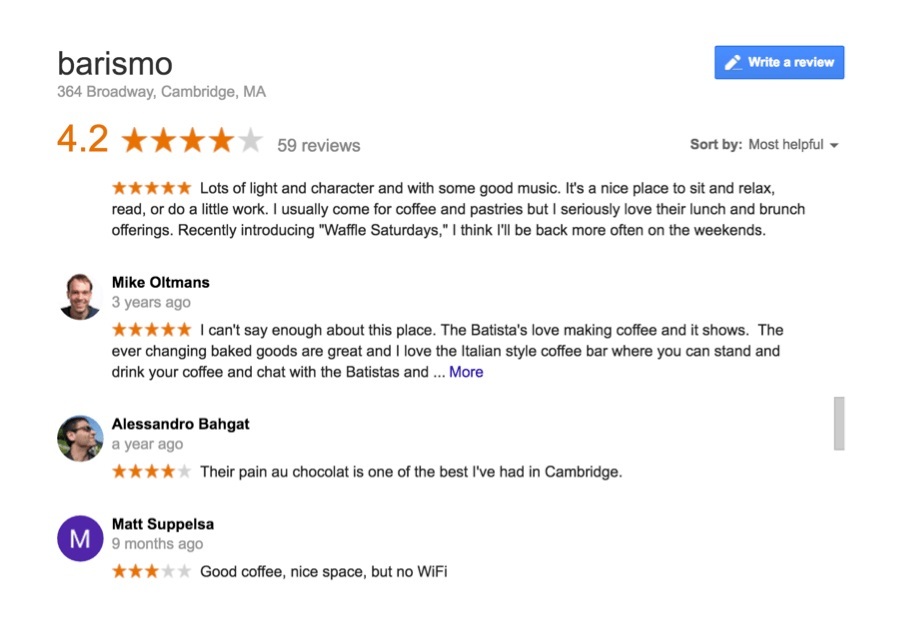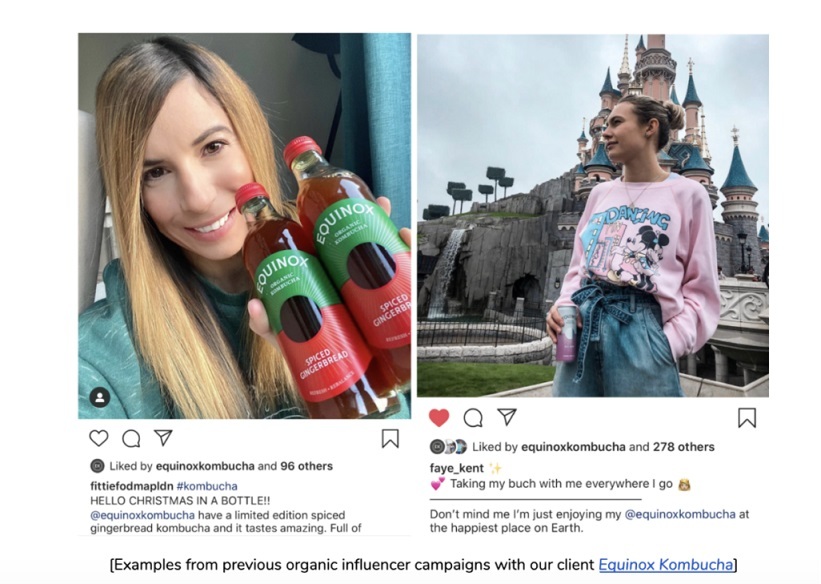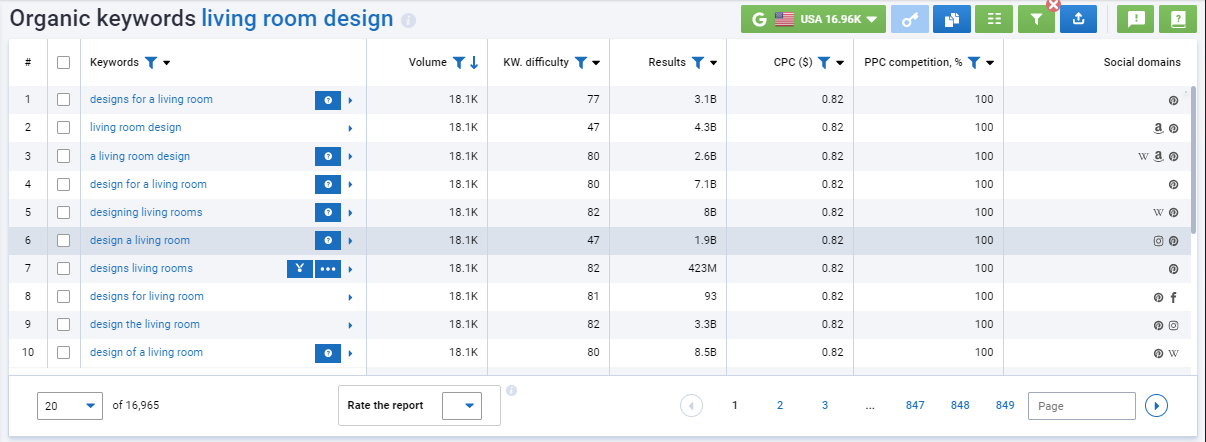Start Exploring Keyword Ideas
Use Serpstat to find the best keywords for your website
Use These 10 Social Media Tips to Skyrocket Your SEO Now

But with ever-growing competition and a lack of unique content, improving search engine rankings can be a challenge.
Approximately 2.5 quintillion bytes of data are produced every day globally. Within this swarm of content, finding your content can be akin to finding a needle in a haystack.
To give yourself a better fighting chance, you must think differently. Try social media to skyrocket your SEO instead of levying all your focus on blog or website SEO.
Questioning how to do that in a foolproof way? Hang out with us for a while.
Grabbing All The Link Opportunities
Enhancing Brand Awareness
Forging Partnerships
Building Authority
Elevating Content Lifespan And Engagement
Satisfying The Audience's Whims
Finding More Content Ideas
Conducting Keyword Research
Including Social Media In SEO Efforts
Using Social Interaction Data To Up Your SEO Game
Conclusion
How Does Social Media Affect SEO?
But a major impact can be created by sharing links via social platforms. This can foster brand exposure.
There are six principal ways in which social media can affect SEO:
- Substantial content distribution
- Greater life of posts
- Enhance visibility and organic traffic online
- Enhance brand recognition
- Increase brand reputation
- Enhance local SEO
As per research by cognitive SEO, there is a link between sharing on social platforms and SEO. This link was validated only after analyzing 23 million social media shares.
The likes, comments, and shares attained on your posts tell Google how popular your posts are. This, subsequently, affects the ranking.
While links are helpful, Google does not consider them as links from authority sites. Still, we can see that the best-ranked pages are the ones with greater social shares.
The indirect impact that social media has on SEO is worth salvaging. Let us see how.
Grabbing All The Link Opportunities
Yet again, it is not as uncomplicated as it seems.

Because the reception of the content from the audience is questionable, it depends completely on how the audience chooses to perceive the content.
Since the method is majorly passive, it relies on a third party's actions. There is no direct push from your end.
The principal idea is to use social media to tell the world that your content exists. Therefore, the promotion of content is vital. No matter how well-researched and well-formulated your content is, it will not gain traction unless it is promoted fairly well.
Think of this as a chain reaction of posting — one post linking leads to another, and so on.
While a link on Facebook is not the same as a backlink yet, it would make people aware of the content's existence. This can foster putting its reference on a website.
Yet, salvaging this method includes a few best practices, which are:
- Formulating a social media marketing strategy that promotes your content in stages. The strategy must depend on the kind of content and the place you share it.
- Creating a standard operating procedure to ensure all your content is shared sufficiently in a strategic manner.
- Prioritizing sharing evergreen content. This type of content should be shared regularly. A small section sees a single post of the brand. Therefore, multiple sharing is crucial.
Enhancing Brand Awareness

Most companies with a good social media presence interact directly with customers and witness an increase in satisfaction levels.
For instance, companies active on Twitter reported a 19% increase in customer satisfaction levels. This impacts the sentimentality associated with brand mentions and also includes customer reviews, public forums, among other types of mentions.
Yet, you always want people to speak positively about your brand. You want to avoid negative mentions because Google focuses on the context of all online engagement forms. It reflects the way people talk about your brand, no matter how good or bad, and determines if your content is relevant to the search queries raised.
This impacts what your site ranks for in terms of the category. It will not determine how high your site ranks.
You must keep your brand mentions positive to ensure your content’s categorization is right.
Forging Partnerships
Since it is becoming increasingly challenging to reach your audience on social media organically, it is important to make connections to ensure that your content reaches the maximum number of people.

- Seek out brand advocatesThese are the fans who stay loyal to your brand and promote it free of cost. This enhances the effectiveness of your brand promotion at no cost.
- Seek out organic influencers who have genuine accounts on social platformsLook for their expertise and authenticity, and aim for those that work within your industry. You must remember that the main idea is to bring in any positive mentions and endorsements for your brand.
- Go for strategic partnersThey are non-competitive businesses or influencers who work within your niche and are typically willing to partner with you to create good content. Such collaboration can help in appealing to the audiences of both parties.
- Make a list of accounts that you want to build a relationship withUpdate this list regularly and ensure that you give equal attention to each account.
- Try to engage with those accountsEnter conversations through comments, direct messaging, shares, etc.
Building Authority
When and if you add social media into the mix, you hold the power to push your content onto different channels to broaden your reach, discoverability, and brand awareness.
People are not limited to a single digital sphere. They get multiple distinct resources daily; this is why marketing on multiple channels is an efficient technique to reach numerous individuals at one time.
Even if social media platforms are not directly contributing to Google's formula, they still have the potential to reach a broad audience to win their trust.
The whole thing will have a good impact in terms of word-of-mouth marketing, shared content, customer reviews, new lead generation, organic traffic on-site, and much more.
It is important to post at the right time on Facebook, Twitter, and other platforms.
- The best time to post on Facebook fall on Tuesday, Wednesday, and Friday. On these days, post between 9 a.m. to 1 p.m. Try not to post on Saturday.
- Similarly, the best time to post on Instagram is on Tuesday between 11 a.m. and 2 p.m. and from Monday to Friday at 11 a.m. Sunday is the worst time to post.
- For Twitter, the best time to tweet is on Wednesday between 9 a.m. and 3 p.m. You can also post from Tuesday to Thursday, anytime between 9 a.m. and 11 a.m. Avoid posting on Saturday.
Based on these, we can agree that weekends are a bad time to post, generally. And mid-week is the best time to post.
We can also say that social media alone should not be the chief source of authority for your brand. You must have your own domain. If you only use social media or even use a free website, your content does not stay in your control.
If these sites shut down, your content would be lost, and their legacy, if any, would be wiped out. The social media channels serving as brand awareness funnels would direct traffic back to your website.
Elevating Content Lifespan And Engagement
But the shareability depends greatly on the quality of your content. This is to say that you will do better if your content is engaging and relatable.
A good piece of content follows the below-given activities:
- Presents a solution to a given problem
- Educates individuals on a topic that interests them
- Entertains individuals in a particular way
- Connects with individuals on an emotional level
To find out the preferences of people, you can also track what kind of content gains more likes, shares, and comments. You can further use that kind of content to drive inspiration for your future creations.
At the same time, you can also reshare and repurpose any of your already famous content on social media. You can use a social media calendar and schedule your high-performing content to get the most out of your efforts.
To analyze the performance of your content on social media, you can use analytical tools. You can seek the help of third-party resources for an in-depth analysis of the topics and types of content that are popular among individuals.
Once you have found out the type of content your audience likes, you can further use a well-laid-out social media strategy to put it in front of the world.
Content relevance really makes a difference here. You can tag influencers and seek business partners while selecting the right hashtags and hosting giveaways for further engagement.
The content that follows a foolproof social media marketing strategy can see an extension in its lifespan.
You can simply repurpose old content that has performed well in the past. In this way, you will not have to work on your content from scratch and still benefit from new content.
Satisfying The Audience's Whims
You can monitor the online discussions to find out the likes and dislikes of your target audience. You can also visit the social media page of your competitors to find out how they are engaging with the audience.
You can also take inspiration from a competitor who is doing better at keeping the audience hooked. You can improvise on the strategy your competitor is already following.
If you come across a follower who seems dissatisfied, do not ignore him. Always acknowledge their comments and respond in the best possible manner because they hold the potential to bring you negative publicity.
Ensure that you respond to a follower or a fan who approaches you. Do not refrain from getting into a healthy discussion.
Once your brand image is impacted by improvement in audience communication, you can expect betterment in the way the audience perceives you across all channels.
Consequently, your discoverability will be affected too.
Finding More Content Ideas
The task is pretty simple. You can scan your own social media accounts and that of your competitors. To do the scanning, you can look at the comments and the questions on the posts.
You can simply forward these questions and comments to your SEO copywriters and ask them to draw ideas from them for blog posts, product descriptions, and other forms of web content.
You can simply bookmark a page, a post, or a story and look at it at a later stage. Then, you can repurpose content to make it more suitable for a website. Later, you can work on the SEO aspect to make your creation more robust.
To do a one-time search across all the platforms at once, you can also use a tool that analyzes data from numerous social media platforms at once. You can find the trending links, trending topics, recent comments, and recent images through such tools.
You can also look out for popular questions people ask on your social media posts and draw on that idea to build your own blog post.
For Twitter, you can take a look at TweetChats. These are regularly scheduled events in which people from over the world come together to converse about a particular topic. It is a chatroom, and here, you can find much to draw inspiration from.
You can also look at your relevant Instagram posts and scan the comments section to know the common queries that people have. Similarly, if a post has gained much traction, then you can use that to make a blog post.
For YouTube, you can search for a term and see the topmost videos that pop-under that. You can look at the comments section and likes and dislikes to see how people perceive that video. Videos that garner positive responses can be changed into blog posts.
You can also use Pinterest to draw ideas about what people are looking at. You can check out Facebook groups to see what people are asking, and you can also scope out LinkedIn to check out what your audience wants.
Targeting platforms that have chat rooms for discussion or groups is a good practice. This is because a number of people interact simultaneously through these.
You can hope for direct growth in your search engine visibility through this.
Conducting Keyword Research
You can find out what people want to read about, what they want to follow and use that to drive your website rankings.
For starters, you can publish “ask the expert” posts on social media to increase engagement. Here, you can conduct Q&A sessions to boost engagement and discover new ideas for keywords.
Based on the industry, you might have to boost the posts or even offer prizes to get traction on the best questions.
Once you find out the best keywords, you can use these within your website content to foster SEO.
In an alternate method, you can use Facebook ad targeting to look into audience behavior. Using this, you can gather data about your audience:
- Location
- Age
- Gender
- Interests
- Relationship Status
- Languages
- Education level
- Place where they work
Similarly, you can look into Twitter to find some fresh keywords, as trends on Twitter move in real-time. In a way, Twitter is ideal for conducting keyword research and finding interesting topics. You can simply go to the “explore” section to find new and trending topics.
You can also search Instagram hashtags to find keywords. For this, go to Instagram and search for key terms. Then see the other hashtags that users generally add. Just as you can find hashtags, repurpose these into keywords.
For YouTube as well, you can search for key terms by typing the main term and looking at what YouTube delivers. You can also get topic ideas via this method. Traditionally, YouTube is not a brilliant source of keywords, but definitely a relevant one.
For Pinterest, you have the option to dig some long-tail keywords that you may not have thought of on your own. Pinterest functions similar to search engines. It gives results based on its own perception of what users interact with the most.
You can also use an advanced Keyword research tool, which will allow you to collect the most relevant keywords for your audience based on their popularity and shareability, like this one from Serpstat:

Including Social Media In SEO Efforts
Remember, social profiles have the potential to rank highly for branded searches. Therefore, you must properly fill your profile with reviews. This will make your business appear more legit. Consequently, this boosts click-through rates and lead conversions.
It is actually quite important to use SEO on your brand’s social profiles. As per research, most brands optimize their social handles for SEO. About 92% make efforts for SEO of their social media profiles.
The importance of putting SEO into social media emerges because of the potential for high rankings on SERPs. For the majority of the audience, they first go to a company’s social media profile before they visit the website.
Social media gives a sense of more personal experience and quicker response time. Social media is also more efficient in connecting with the buyer persona. Generally, consumers use various social media platforms to get marketing ideas about a particular company.
You can target platforms like LinkedIn, Facebook, and Twitter to rank highest when it comes to lead conversions. Hence, they should be targeted first. Social media and SEO combined can lead to great cross-promotions for any business. The chief idea of cross-promotion employs promoting the content of websites on social media and content of social media on websites. This helps create business omnipresence across all the online locations where your target audience hangs out.
If you want to bring your leads to the website eventually, then lay extra stress on redirecting the audience from social media to websites. Using the right CTA in your posts can be helpful. Additionally, you can also provide links.
Using Social Interaction Data To Up Your SEO Game
Most of these metrics can be improved via testing and measuring interaction on social media. Consequently, marketers can use the communities of their brand as a sounding board to check different content pieces.
You should look for the social media posts that get the best engagement. Further, you should use the insights received to give a defined structure to the titles and descriptions of the pages.
For the people who are coming to the post via social media, then they are more likely to click on it in the SERPs. So, the primary idea is to improve the SEO title and meta description based on the social media interaction data.
You can conduct specific searches to see if your content is doing well on social media platforms and as you discover the content that fares well, you can salvage its idea to build further content for your website.
You can also repurpose a small form of content such as a social media post into a blog post to increase your chances of ranking better in SERPs.
Do not forget that the purpose of SEO is not to bring organic traffic, it is to generate relevant traffic to enhance conversions. You can appeal to the target audience through social interaction data in true senses.
With this strategy, the likelihood of getting more conversions would also see the light of day.
Conclusion
If you choose to make your content engaging and relatable while trying to promote it on an omnichannel basis, you can genuinely improve your content's discoverability.
The content that is highly discoverable usually sees a spike in search engine rankings, resulting in improved SEO.
So, now is the time you shift your brand's attention from the run-of-the-mill SEO best practices to optimizing your social media for better SEO.
Growing your social presence while improving your SEO will be like achieving two goals with half effort.
So, build a strategy, create good content, post it on social media, and see your search engine rankings soar.
Speed up your search marketing growth with Serpstat!
Keyword and backlink opportunities, competitors' online strategy, daily rankings and SEO-related issues.
A pack of tools for reducing your time on SEO tasks.
Discover More SEO Tools
Backlink Cheсker
Backlinks checking for any site. Increase the power of your backlink profile
API for SEO
Search big data and get results using SEO API
Competitor Website Analytics
Complete analysis of competitors' websites for SEO and PPC
Keyword Rank Checker
Google Keyword Rankings Checker - gain valuable insights into your website's search engine rankings
Recommended posts
Cases, life hacks, researches, and useful articles
Don’t you have time to follow the news? No worries! Our editor will choose articles that will definitely help you with your work. Join our cozy community :)
By clicking the button, you agree to our privacy policy.

